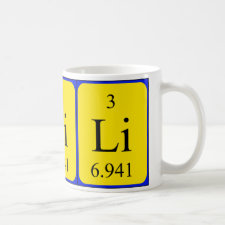
Authors: Xu XC, Li Y, Yang DY, Zheng XD, Wang YY, Pan JM, Zhang T, Xu JC, Qiu FX, Yan YS, Li CX
Article Title: A facile strategy toward ion-imprinted hierarchical mesoporous material via dual-template method for simultaneous selective extraction of lithium and rubidium.
Publication date: 2018
Journal: Journal of Cleaner Production
Volume: 171
Page numbers: 264-274.
DOI: 10.1016/j.jclepro.2017.10.023
Alternative URL: http://www.sciencedirect.com/science/article/pii/S0959652617323144
Abstract: With the increasing market demands of lithium (Li) and rubidium (Rb) around the world, the shortage of Li and Rb seriously restrict the further development of relevant industries. In this work, we report a superior lithium/rubidium imprinted hierarchical porous silica (Li/Rb-IHPS) for the simultaneous selective extraction of lithium and rubidium from aqueous solution. Li/Rb-IHPS was prepared by ion imprinting technology (IIT) by using 12-crown-4 (12-C-4) and N-[(3-Trimethoxysilyl) propyl] ethylendiamine triacetic acid trisodium salt (TMS-EDTA) as functional monomers. The structure, thermal property and surface functional groups of as-prepared Li/Rb-IHPS material were characterized by Fourier infrared spectroscopy (FT-IR), elemental analysis, thermogravimetric analyzer (TGA), scanning electron microscopy (SEM), transmission electron microscopy (TEM), X-ray diffraction (XRD), and nitrogen adsorption-desorption. The results indicate that the as-prepared material has a hierarchical mesoporous structure (peak pore at ca. 3-4 nm and 12-15 nm) with high specific surface area (BET) (242.47 m2 g-1). The adsorption experiments show that Li/Rb-IHPS has a high adsorption capacity for Li+ (166 μg g-1) and Rb+ (141 μg g-1). The adsorption process can be described by pseudo-second-order kinetic model, suggesting that the adsorption for Li+ and Rb+ is controlled by chemical adsorption. And the Langmuir isotherm model can well fit the experimental data, illustrating that the adsorption process are all monolayer adsorption reactions. Additionally, the adsorption selectivity and reusability measurements were also investigated. Compared with some ions such as Na+, K+, Mg2+ and Cs+, Li/Rb-IHPS material shows excellent adsorption selectivity for Li+ and Rb+. After five cycles, the Li/Rb-IHPS material remains high adsorption capacity for Li+ (94%) and Rb+ (93%). The obtained results indicate that Li/Rb-IHPS can be used to extract the lithium and rubidium from oceans and lakes selectively, rapidly, and environmentally
Template and target information: dual template, rubidium ion, lithium ion, Rb(I), Li(I)
Author keywords: Mesoporous material, Simultaneous adsorption, Lithium, Rubidium, Ion imprinting technology



Join the Society for Molecular Imprinting

New items RSS feed
Sign-up for e-mail updates:
Choose between receiving an occasional newsletter or more frequent e-mail alerts.
Click here to go to the sign-up page.
Is your name elemental or peptidic? Enter your name and find out by clicking either of the buttons below!
Other products you may like:
 MIPdatabase
MIPdatabase









